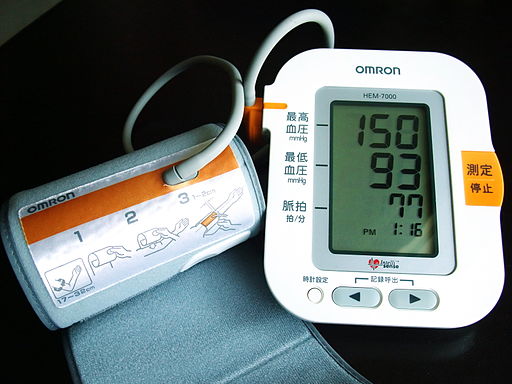High blood pressure is a serious medical condition. If left untreated, high blood pressure may lead to many chronic diseases such as atherosclerosis, heart failure, coronary artery disease, kidney problems, aneurysms, etc. Known as the silent killer, because often hypertension shows no symptoms, high blood pressure could build up gradually as a result of bad lifestyle habits, or it could be as a result of an underlying disease. The only way to find out if you suffer from high blood pressure is to measure your blood pressure. This should be done at your doctor’s office at least twice a year if you are 18 years old. Older individuals should have regular checkups monthly at home, and at the doctor’s office. This is especially important for truckers who have to keep their health in check to remain certified; such individuals are highly advised to visit a website like Driver Physicals.
Common Misconceptions About High Blood Pressure
Although hypertension (high blood pressure) is a very serious medical condition, there are no confirmed signs or symptoms of high blood pressure. Some of the possible symptoms of high blood pressure are headache, nose bleeding or dizziness. Extensive research has been conducted on the most common sign of possible high blood pressure: headaches. The results of this research were that people with high blood pressure had 40% fewer headaches than people with normal blood pressure. The researchers also tested the theory of high pulse pressure. People with high pulse pressure had half the amount of headaches than the people with normal pulse pressure.

Another myth for hypertension is that increased blood pressure leads to nose bleeding. Statistical data from emergency rooms at hospitals showed that only 17% of the patients with high blood pressure had nosebleeds and 83% of the patients with high blood pressure had no nose bleeding. Although early phases of hypertension may lead to nosebleeds, there are other possible causes for that. If you have nosebleeds, you should make an appointment at your doctor’s office to get yourself checked for the possible causes.
Other symptoms often regarded as high blood pressure signs are blood spots in the eyes, face blushing, and giddiness. These symptoms are more common in people with high blood pressure, but they aren’t causes of having high blood pressure. All the above mentioned symptoms must not be ignored and a proper medical evaluation is needed, but you shouldn’t jump into a conclusion that you have hypertension based on these symptoms alone. A couple of medical tests will determine the real cause behind the symptoms. Other symptoms noticed in people with high blood pressure besides the ones mentioned are severe headaches, elevated anxiety, and difficulty breathing.
The only way to properly evaluate yourself for high blood pressure is with regular checkups using a high-quality heart rate monitor. These digital monitors are lightweight and should be taken everywhere. Don’t forget to take your heart rate monitor if you are driving on a long trip. Drivers and other professions with a sedentary workplace must pay careful attention to their blood pressure as they are at increased risk.
How Do I Choose a Heart Rate Monitor?
The American Heart Association recommends a digital upper arm heart rate monitor. Before buying a heart rate monitor, check if the monitor has passed the rigorous testing at the British Hypertension Society, the Dabl education trust website, and if the heart rate monitor is confirmed by the International protocol for the validation of automated BP measuring devices. These organizations have a list of approved monitors on their websites, so always check if the heart rate monitor is approved.
When Should I Seek Medical Help?
If your heart rate monitor shows blood pressure 180/110 or higher, call 911 or immediately ask for help at the nearest hospital. This level of high blood pressure causes permanent damage to your organs.
How Do I Properly Measure My Blood Pressure?
If you are using a wrist heart rate monitor always direct your wrist to your heart. Don’t rely on only one heart rate monitor measurement, always have two measurements consecutively. Don’t be confused if you get two different blood pressure results, it is normal. Our blood pressure changes constantly for various reasons. If you have blood pressure above 140-159 and over 90-99 after two measurements, then you have high blood pressure. Now is the time to start taking some measures to lower your blood pressure.
Though high blood pressure may be regarded as the silent killer, you don’t have to let it creep up on you. Get tested by your local doctor and follow their suggestions for any alterations you may need in your life. Take control of your future today.
Useful links related to article –http://www.heart.org/HEARTORG/Conditions/HighBloodPressure/SymptomsDiagnosisMonitoringofHighBloodPressure/What-are-the-Symptoms-of-High-Blood-Pressure_UCM_301871_Article.js.
The writer, Edrick Hypolite, is presently studying medicine in the hopes of being able to resolve many common medical problems that exist today including hypertension and other high blood pressure problems. To learn more about Edrick you can visit Google+.



